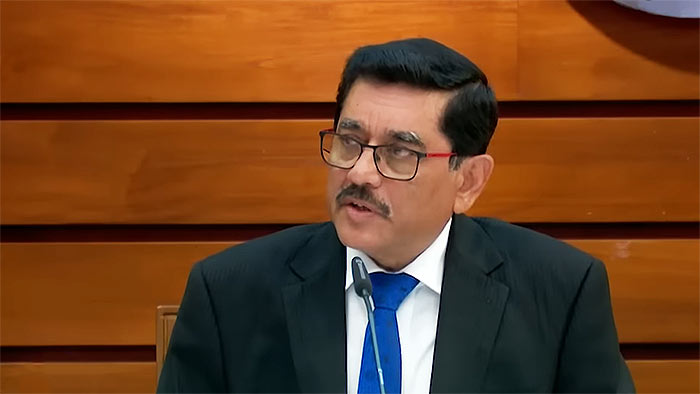Sri Lanka Central Bank Governor confident of debt repayment and rating upgrade

Dr. Nandalal Weerasinghe. (Photo: CBSL)
Sri Lanka’s Central Bank Governor, Dr. Nandalal Weerasinghe, expressed optimism this week about the end of all debt restructuring and the start of debt repayment.
He believes this will help Sri Lanka move out of ‘default’ status assigned by global rating agencies.
Different rating agencies have their own methods for assessing sovereign credit ratings. However, resuming normal debt repayments will restore Sri Lanka’s access to international capital markets for more borrowing. “The main goal is to return to a normal repayment schedule after restructuring. This will remove the ‘default’ label. I am confident we will achieve this soon,” Dr. Weerasinghe said at a media briefing after the monetary policy meeting on Wednesday.
After finalizing debt agreements with bilateral creditors in June, Sri Lanka gained access to bilateral credit. Japan, one of Sri Lanka’s largest creditors, resumed development funding this week. Sri Lanka expects to receive up to $75 million from Japan in the next few weeks, with a commitment of $1.1 billion over the next six years.
Similarly, an agreement in principle to restructure around $12.5 billion in bonds in default was reached between bondholders and the Sri Lankan government. This agreement, pending approval from bilateral creditors and the International Monetary Fund, is expected to improve Sri Lanka’s credit rating.
Sri Lanka’s credit rating was downgraded to ‘restrictive default’ and ‘selective default’ status after announcing a default on most foreign currency liabilities in April 2022. As Sri Lanka finalizes bondholder debt deals with favorable terms, rating agencies may lift these default statuses, restoring confidence in lending to Sri Lanka.
Rating agencies began downgrading Sri Lanka’s sovereign ratings in December 2019 due to disagreements with the government’s policies and a lack of understanding of the impact of events like pandemics on small economies.

Latest Headlines in Sri Lanka
- Sri Lanka introduces new maximum retail pricing system for medicines March 26, 2025
- Court orders property seizure of ex-police OIC in cattle smuggling case March 26, 2025
- Sri Lanka launches THRIVE to empower women and tackle gender inequality March 26, 2025
- Army soldier arrested with concealed bullet at Presidential Secretariat March 26, 2025
- Sathasivam Viyalanderan arrested March 25, 2025


